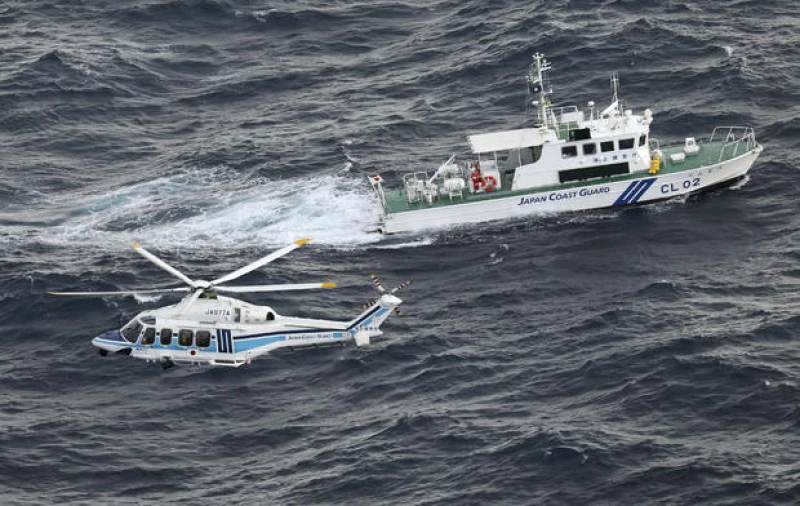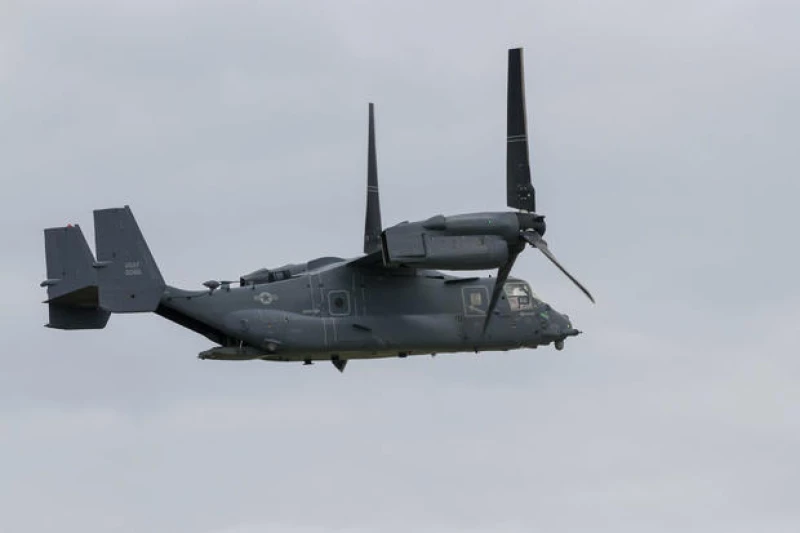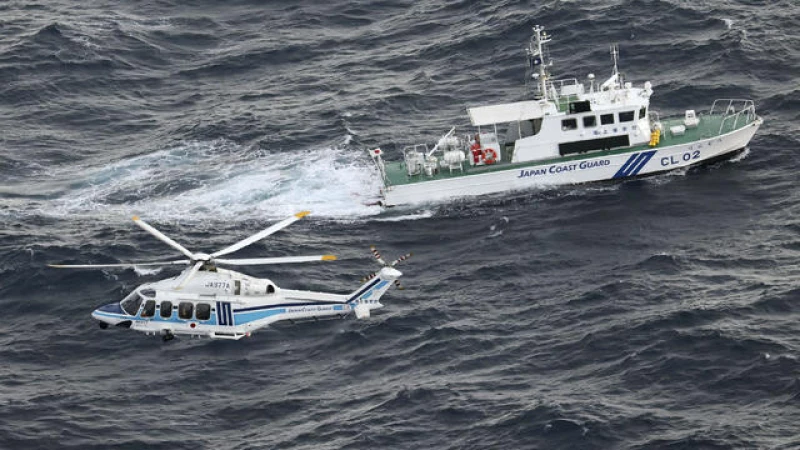Search Continues for Missing American Service Members in Japan
Tokyo — The search for seven American service members continued Thursday in Japan's waters after a U.S. Air Force Osprey aircraft crashed into the sea off the tiny island of Yakushima, killing at least one person, according to U.S. and Japanese officials. The Japan Coast Guard remained in charge of the search and rescue operation and had deployed side-scan sonar to scour the seabed for evidence of the ill-fated Osprey.
Japanese coast guard vessels and helicopters were being aided in the search by craft from the Japan Self-Defense Forces, the nation's military. Several pieces of debris believed to be from the Osprey were recovered from the water Wednesday, in addition to a large, empty orange life raft.
A U.S. defense official confirmed to CBS News on Wednesday that one of the crew members had died, after an official with Japan's coast guard said a body was recovered from the water. Seven people remained missing.

U.S. Air Force Special Operations Command said in a statement later Wednesday that the Osprey was performing a routine training mission when it crashed, but it did not confirm that one of the crew members had died, saying the that both the "cause of the mishap" and the "crew's condition are unknown at this time."
Ospreys' history of crashes, and tension with Japan
Japan's Minister of Defense said Thursday that the country, one of America's closest allies in Asia, had asked the U.S. to stop flying Ospreys over Japan until the aircraft could be confirmed safe.
The fact that the U.S. military has 30 of Ospreys in service in Japan is evidence that it believes the planes are safe, but Japanese politicians needed to reassure a very nervous public.
Tuesday's crash took place very close to shore, fueling fear among the Japanese people after a series of incidents with the aircraft that one day, an Osprey could plunge out of the sky onto their heads and kill innocent civilians.
It's a contentious issue, and part of the wider contentious topic of the huge U.S. military presence in Japan, where there are some 50,000 American personnel stationed.
- Japan approves new funding for U.S. military presence as threats loom large
Amid the growing concerns over security threats, Japan has recently approved additional funding to support the continued presence of the U.S. military in the country. The bilateral defense alliance between Japan and the United States has remained strong, but tensions have been building up over the years. The recent crash incident has further intensified these tensions.
Following the crash, the Japanese Coast Guard immediately dispatched ships and helicopters upon receiving the distress call from local fishermen. However, it is expected that the U.S. military will take over the recovery and investigation process, potentially excluding the Japanese authorities from significant involvement.
U.S. Ambassador to Japan, Rahm Emanuel, expressed his gratitude to the Japanese Coast Guard, Japanese Self-Defense Forces, and the local community for their assistance in the search and rescue operations. He emphasized the importance of supporting each other during challenging times and expressed hope for the safe return of the servicemembers.

It is worth noting that Japan is the only country, apart from the United States, that operates Ospreys. The Japan Self-Defense Forces currently possess 11 of these U.S.-made aircraft, with a few more on order. However, in light of the recent incident, Japan's defense ministry has decided to temporarily ground its own fleet of Ospreys.
Osprey Crashes Raise Concerns Despite Versatility
There have been a series of fatal crashes involving U.S. Osprey aircraft in recent years. In the most recent incident, an aircraft went down during a multinational training exercise on an Australian island in August, resulting in the tragic loss of three U.S. Marines and leaving eight others hospitalized. Similarly, in the previous summer, all five U.S. Marines on board another Osprey died when their aircraft crashed in the California desert.
In 2016, an Osprey crashed in shallow water just off the Japanese island of Okinawa. Fortunately, all the U.S. Marines on board survived that incident.
Despite these crashes, the versatility of the Osprey, which can take off and land like a helicopter but then tilt its rotors to fly as a turbo-prop plane, has made it a reliable workhorse for the U.S. military, particularly for troop transport.
Both the Japanese and U.S. militaries are likely to want to continue using Osprey aircraft in the highly strategic corner of the western Pacific.







